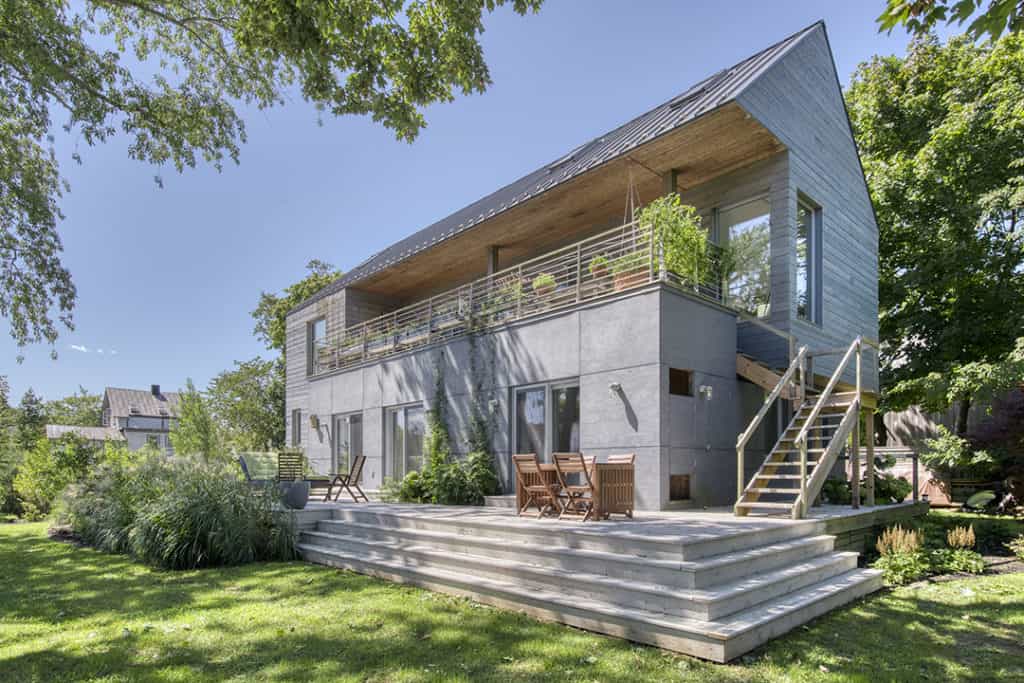To understand sustainable building, we must first define it. Countless publications, texts, and authorities have different definitions of sustainable building, but for me, the basis is simple: to be considered sustainable, buildings should have high energy, air, and water efficiency, create little to no impact on the environment, and be durable enough to withstand a long life cycle.

These elements can be broken down into three categories: efficiency, impact, and life cycle, all of which are essential to consider before beginning the design process. If you are currently building a home or even a multifamily building, how does your building compare with the practices outlined below? If you are a developer, building sustainably doesn’t have to be a deal killer. In fact, building sustainably could result in higher returns because people are more energy and environmentally conscious.
Put simply, the key to energy efficiency is to use less of it. By designing a building with an efficient building envelope (robust insulation and triple-glazed windows can help), the less heating and cooling energy the building will require. To be sustainable is to use little to no fossil fuels, so it is important to specify all-electric appliances and heating and cooling systems. When a building’s required energy levels are low enough, it can be financially and environmentally sound to install solar panels on a roof to supply the structure’s power needs. Aside from the design itself, consider the energy used to transport the materials to your site. Is it possible to source them closer? The farther an item has to travel to your project, the more energy it takes, which results in a larger carbon footprint.

Most new construction has some negative impact on our environment. There may be vegetation that is chopped down, animals who are displaced, or soil erosion as a result of your project. Consider how to minimize the building’s impact. There are ways to limit and prevent damaging impacts, such as considering your building’s carbon footprint and the materials used. Sourcing sustainably may take more work than usual, but it is well worth the time, for both environmental and client health. Asking your brand representative about their green commitments, ethics and standards is a great way to start.
Lifecycle is important not only for the final built project, but for the materials purchased during construction. Your material selections, if made using reputable sources and networks, can lead a house to last even longer before maintenance is needed. So often, construction sites see thousands of dollars of extra material wasted. Modular building should have less waste as a result of building in a factory. Although, if it is a site-built project, the extra materials can be sent to a local recycling facility. Oftentimes, they can use the wood for soil enhancement, giving it a second life. To further the lifecycle of leftover materials such as paint, tile, or brick, find temporary storage and list the items on recycling sites such as Freecycle or Habitat for Humanity. In this case, your leftovers can become a part of someone else’s home. To maximize the longevity of a building, design, materials, and construction, of course, are key.









![Join us May 6th at The Harmonie Club for the Spring Salon Luncheon, a beautiful gathering in support of a truly meaningful cause. Together, we’ll raise critical funds and awareness for @campgoodgriefeeh—@eastendhospice’s summer bereavement camp helping children and teens navigate loss with compassion, connection, and healing. [link in bio]](https://hamptonsrealestateshowcase.com/wp-content/uploads/sb-instagram-feed-images/491527001_18506092897030135_3117653411609489602_nfull.webp)
![Welcome to this exquisite custom-built home in the prestigious Quogue South estate section, just moments from Dune Road and some of the world’s most breathtaking ocean beaches. Completed in 2024, this expansive shingle-style residence offers 6 beds, 7 full and 2 half baths, a separate legal guest cottage, heated gunite saltwater pool with spa, all set on a beautifully manicured 0.74± acre lot. Represented by @lauren.b.ehlers of @brownharrisstevens. [link in bio]](https://hamptonsrealestateshowcase.com/wp-content/uploads/sb-instagram-feed-images/491516869_18505931593030135_4655757731678000577_nfull.webp)
![Discover 11 Oyster Shores, a unique marriage of thoughtful design, uncompromised execution and meticulous craftsmanship expressed across nearly 6,000± sq. ft. of highly curated living space. Brought to life under the watchful eye of Blake Watkins, the visionary behind WDD, the project is a refreshing departure from the ordinary. Represented by @nobleblack1 of @douglaselliman. [link in bio]](https://hamptonsrealestateshowcase.com/wp-content/uploads/sb-instagram-feed-images/491440257_18505740808030135_9064730571228880657_nfull.webp)
![Reserve your ad space now in the Memorial Day “Summer Kick-Off” Issue of #HRES! 🍋 Be seen by high-end buyers and sellers across the Hamptons, Manhattan, and South Florida—just in time for the start of the season. Secure your spot today and make waves this summer 🌊☀️ [link in bio]](https://hamptonsrealestateshowcase.com/wp-content/uploads/sb-instagram-feed-images/491441694_18505573426030135_4475989184561040528_nfull.webp)

![Tuesday, April 15, was Tax Day for most, but for someone in Palm Beach, it was closing day! The nearly 8,00± sq. ft. Mediterranean-style residence at 240 N Ocean Boulevard, with direct ocean views and a private, 100-foot beach parcel, closed at exactly $26,670,750. The seller was represented by Jack Rooney of @douglaselliman and Elizabeth DeWoody of @compass while Dana Koch of @thecorcorangroup brought the buyer. [link in bio]](https://hamptonsrealestateshowcase.com/wp-content/uploads/sb-instagram-feed-images/491445351_18505056166030135_4907944420436119099_nfull.webp)
![Previously featured on our 2024 Columbus Day issue cover, 74 Meeting House Road has officially sold! This stunning new construction in Westhampton Beach offers the perfect blend of thoughtful design and timeless style. Congratulations to @kimberlycammarata of @douglaselliman who held the listing! [link in bio]](https://hamptonsrealestateshowcase.com/wp-content/uploads/sb-instagram-feed-images/491441951_18504901357030135_2664904795600183799_nfull.webp)
![Located South of the highway in Southampton this 4 bedroom, 5.5 bath multi-story property, offers extensive exterior architectural detail throughout. 60 Middle Pond Road offers breathtaking views and tranquil living, nestled along the serene shores of Middle Pond and Shinnecock bay. Represented by @terrythompsonrealtor @douglaselliman. [link in bio]](https://hamptonsrealestateshowcase.com/wp-content/uploads/sb-instagram-feed-images/491451873_18504686110030135_5284427082339135969_nfull.webp)
